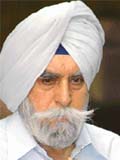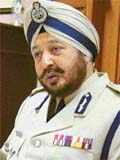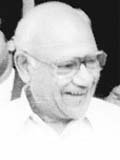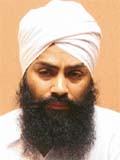Encounters : Fact and Fiction
With the focus on Sukhwinder Singh Sukhi, a former terrorist ‘rehabilitated’ by the Punjab police, the ghost of terrorism — because of the methods adopted to counter it — has once again come to haunt Punjab. Prabhjot Singh reports
|
|
Terrorism, according to an adage, never dies. There could not be a better example than Punjab where the smouldering of its remnants frequently become apparent in debates, both in and outside the state assembly, over the root causes as well as methodology adopted in combating the turbulence that took more than 20,000 lives in a little over two decades of the last millennium.
Late last year while the state legislature debated for several hours over the root causes of terrorism, focus shifted to "questionable" methodology adopted by the security forces in putting down the armed conflict. A renewed debate was witnessed in the Punjab Vidhan Sabha during a special call-attention motion during the Budget session last month.
The provocation came from the media revelation that a "slain" terrorist-turned cat, Sukhwinder Singh "Sukhi", has been living a comfortable life under an assumed name with the blessing of the Punjab police. The entire Opposition and various human rights organisations went on the offensive against the Congress government and the Director-General of Police arguing that there could be no better evidence of the state "abetting" terrorism than the Sukhi case.
|
|
"Sukhi as an individual case is not important. For me, it is the Sukhi issue which is more important," says the Director-General of Police, S.S. Virk, maintaining that as a head of the police force, he is morally duty-bound to own up all such action taken by the security forces in restoring normalcy in the trouble-torn state.
"Instead of keeping quiet, I thought I would lead the force from the front and defend the actions of the security forces taken in the interest of the country in general and Punjab in particular," he adds.
Interestingly, of all former Punjab police chiefs who remained a part of the fight against terrorism, only supercop, K.P.S Gill, stood by Virk as the Sukhi controversy threatened to blow the veil over "all is normal in Punjab." The silence of other police officers, holding a varied view point on combating terrorist violence is intriguing. As before, Punjab police continues to be vertically divided on its handling of terrorism.
And as chance would have it, the Sukhi issue came up when another cop, a middle-rung officer, Daya Nayak of Mumbai police, known as ‘encounter specialist’, was arrested for acquiring property and assets disproportionate to his known sources of income.
Both K.P.S Gill and S.S.Virk admitted that some known hardcore terrorists were won over and used in the fight against terrorism and Sukhi was just one example. They also agreed that there has been no counter-terrorism doctrine available to guide forces in the country. Observations made by Gill in his letter to Chief Minister, Amarinder Singh, in defence of Virk are not only important but significant.
Says Gill, "In the protracted periods of terrorist and insurgent violence in different parts of the country, the geographical scope of which has been expanding, certain practices have emerged and become established in combating and eradicating terrorism. Successive prime ministers in the country have had no reservations or compunctions against entering into direct negotiations with active and surrendered terrorists in their search for solutions.
"The use of the surrendered terrorists and the provision of alternative identities to protect them are integral to anti-terrorist and anti-organised crime campaigns across the world, and had been used extensively and openly in the Punjab," wrote Gill.
Interestingly, most of ‘trusted’ police officers of Gill’s regime had built their "own armies of cats — of men drawn from the fold of terrorists — besides a team of ruthless and tough officers for all anti-terrorist operations in their respective areas."
It were members of this army of "young police officers" that unveiled a strong offensive against terrorism in the state to earn the wrath of not only various human rights organisations and media for transgressing the laws of the land, including the rule of law, but also the unsavory title of "ruthless or extra judicial killers" for which many of them are still facing prosecution.
Many of them went to jail, were refused bail, stood trial and faced prosecution in various courts for their "over enthusiasm, extra-judicial actions and for overstepping their limits in denying human rights to their captives, the so-called terrorists." These police officers and men of their "special senas or armies" belonged not only to Punjab police but also from Central police organisations, including the Border Security Force and Central Reserve Police Force. There were some sprinkling of police officers drawn from other states, including Uttar Pradesh and Madhya Pradesh.
Interestingly, in cases such as Sukhi’s, where militants were "shown killed", some police officers got "gallantry" awards.
In certain cases, one or other "most wanted militant" was killed in more than one ‘encounter.’ And all this was accepted as part of the wider strategy of fighting terrorism. Officers and security forces sought protection under the proviso that "no suit, prosecution, or other legal proceedings shall be instituted except with the prior sanction of the state government against any person in respect of anything done or purporting to be done in the exercise of powers conferred upon them" by the Punjab Disturbed Areas Act, the Armed Forces (Punjab and Chandigarh) Special Powers Act, and the Terrorist and Disruptive Activities (Prevention) Act.
It was this proviso that generated a conflict between security forces on the one hand and human rights organisations on the other when it came to determining whether the former had sweeping powers to resort to "extra-judicial killings." They also prepared their lists of officers and men assisting security forces in letting loose state repression. Incidentally, many of the young officers who were entrusted the responsibility of eliminating the menace of terrorism from the state figured in their list. Though peace has returned to the state, some of them are still facing trial. No matter, a part of "secret funds" was placed at the command of the litigation wing of the Punjab police to help, assist and fight cases of all such officers. Needless to say, seniority or continuity in service was maintained in cases of all those officers who went to jails before being finally acquitted.
In 1997, when an officer acknowledged for his bravery in the fight against terrorism, Ajit Singh Sandhu, committed suicide by jumping before a train, K.P.S. Gill shot a four-page letter to the then Prime Minister, Inder Kumar Gujral.
"I have maintained a silence on events in Punjab for over two years in the hope that the leadership of the nation will do justice, now that peace has returned to the state, to those brave men and women who made this peace possible.
"Recent events, however, force me to speak out now: a continued silence on my part would be a betrayal of trust, an abdication and responsibility. I cannot remain silent when the memory of the men who sacrificed their lives under my command is denigrated; and when those who have survived the greatest of dangers and immeasurable sacrifices in campaign during a virulent proxy war are subjected to an unprecedented and unprincipled inquisition," wrote Gill.
"For over a decade, to wear a police uniform in Punjab was to proclaim yourself a wilful target for professional terrorist attacks. Yet thousands of men in uniform stood as a bulwark of democracy against the unconstrained depredations of the extremists. Further, wrote Gill, "the question repeatedly asked in this context is, ‘Were there any police excesses?’ Only a liar or fool would deny that random excesses occurred in a campaign of the magnitude and duration of the struggle in Punjab. Wherever such excesses were detected, action was inevitably taken. The real question is whether a strategy of state terrorism was adopted by the police, and the answer is unequivocally in the negative."
In the fight against terrorism, Punjab resorted to different tactics. The then police chief, J.F. Ribeiro, made that historic proclamation of "bullet for bullet" after terrorists had attacked a police party inside the Jalandhar district courts complex to get their accomplices released. The success story of Punjab police was scripted through the likes of Sukhi who not only acted as "spotters" but actively assisted security forces in "eliminating" the most wanted terrorists. In the post-Operation Bluestar era there was a considerable movement from villages, especially in border districts, to Pakistan. Hundreds of youth were detained in jails in Lahore and Faisalabad as only handful was picked as "suitable" for training by ISI sleuths. In 1985, when the government, headed by Surjit Singh Barnala, assumed office in Punjab, many of these wanted to be back, for peaceful rehabilitation. It remained a nightmare as Pakistan was not willing to release them. An attempted jailbreak case in Faisalabad saw police opening fire in which one Punjabi boy, Gurdeep Singh, was killed. Pakistan authorities relented and allowed these illegal detainees to return in small groups in early 1986.
The Sarbat Khalsa on January 26, 1986, saw the proclamation for Khalistan being made. Formation of a few terrorist organisations and Panthic Committees followed in the subsequent months. In 1986, when the National Security Guards and Punjab police launched a combined operation to clean up the Golden Temple complex, 550 youth were rounded up of which nearly 300 were let off.
The government kept its doors open and welcomed those who wanted to return to the mainstream. The process of rehabilitation, without any incentive, was put in place. In 1986, only 38 surrendered. There was none in 1987 or 1988. The build-up continued and on May 9, 1988, the present DGP, S.S. Virk, was injured when he was fired upon in the Golden Temple complex in the aftermath of Operation Black Thunder I. Twelve militants were killed, nearly 200 others arrested.
It was during this period that the support base of militants spread among intellectuals and sympathy groups. Political consolidation witnessed with election to the Lok Sabha of Simranjit Singh Mann, Dhyan Singh Mand, Atinderpal Singh, Bimal Khalsa and Sucha Singh among others was an opportunity for a negotiated settlement or early end to bloodshed. Unfortunately, it was frittered away. True, Punjab has been a case of missed opportunities.
It was in 1986 that BSF and CRPF were inducted in Punjab in a major way. Before that, in 1985, the Akali govt set up a three-member committee, headed by Justice A.S. Bains, to scrutinise pending cases against militants. The panel recommended the release of 1036 detained youth.
Subsequently, during the Congress government of Beant Singh in Punjab, 986 persons had surrendered, of which only 15 were hardcore. During the Akali-BJP regime between 1997 and 2002, the number of those surrendered was just 20, including six the highest, in 1998.
Interestingly, the police also resorted to yet another strategy in which surrenders were "engineered" as arrests. Most of these took place during the SAD-BJP government and included the arrest of most dreaded terrorist of late 1980s and early 1990s, Wassan Singh Zaffarwal, who also headed one of several Panthic Committees. Even the arrest of Dr Sohan Singh, another Panthic Committee chief, took place during this period.
The surrender and subsequent rehabilitation programme was not as successful as expected. Some of the surrendered militants, including Baldev Singh Hothian, Ranjit Singh Rana (a brilliant student, who had trained to be a lawyer), Harminder Singh Sandhu (All-India Sikh Students Federation Secretary) and Rajinder Chodha (a Hindu turned baptised Sikh), for example, who fell to bullets of their fellow militants after their release. Others released from Jodhpur jail, including hijackers of an Indian Airlines flight from Chandigarh, got into the mainstream. Two of them, including Amarinder Singh, were from Chandigarh. Amarinder Singh later was elected as a member of the SGPC.
While those who surrendered above ground or publicly faced a plethora of problems, including pressure from militant organisations, to return to the fold, a few, (who were more enterprising) were assimilated in the security forces as cats.
It was these "militants" who scripted success for security forces. The process, guarded and secretive in the first place, has always remained shrouded in controversies which continue to linger and evoke bitterness over any reference to terrorism in Punjab.
The Tribune, Sunday, March 12, 2006
http://www.tribuneindia.com/2006/20060312/spectrum/main1.htm






0 Comments:
Post a Comment
<< Home